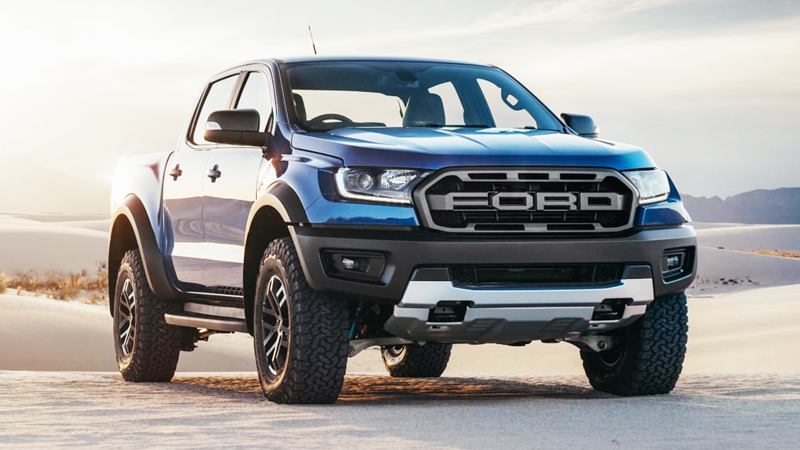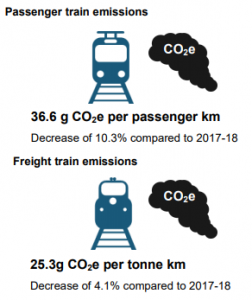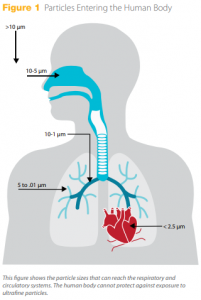
Pollution from different vehicles
Carbon monoxide (CO), nitrogen oxides, and hydrocarbons are released when fuel burns in an internal combustion engine. Carbon monoxide is produced when the carbon in fuel doesn’t all burn. An inefficient engine will burn more fuel and cause more emissions. Some fuel vapor leaves a vehicles engine through the exhaust. When pollutants like NOx or hydrocarbon combine in sunlight, they produce ozone. We don’t actually know how much of the total amount of air pollution is caused by vehicles, but even though it might be less than industrial production, it is still important to know which vehicles emit the most pollutants. The EPA estimates that on road vehicles cause 1/3 of air pollution in the USA while transportation causes 27%. We do have to remember that the older the vehicle, the more it pollutes.
Particulate matter (PM): Particulate matter is a mixture of small particles and droplets, including acids, such as nitrates and sulphates; organic chemicals; metals; soil; or dust. Combustion can produce a large quantity of very fine particles 10 nanometres in diameter or smaller, but it is regulated by measuring the total quantity of all PM particles sizes. The human body cannot protect against exposure to ultra fine particles, which can enter the heart and lungs through inhalation (Figure 1) and have serious health effects, including respiratory diseases and heart and lung conditions. Volatile organic compounds (VOCs) can have adverse health effects or contribute to air pollution. Exposure to black smoke exhaust has also been shown to increase the risk of developing lung cancer and therefore mortality risks. Methane, in the form of unburned fuel, is a tailpipe emission primarily for natural gas fuels. Although it is not toxic, methane has a global warming potential that is 25 times higher than that of CO2.
Emission Standards
Many national governments use emissions standards and testing to control the amount and types of harmful emissions that are released into the environment as a direct result of fuel combustion. The drive cycles required for emissions testing in different countries can be based on international standards as well as driving conditions in different locations. Euro emissions standards use two specific drive cycles. Since 2000, these cycles have been the European Stationary Cycle (ESC), a sequence of constant speeds and loads, and the European Transient Cycle (ETC), which simulates typical driving patterns. The EPA test is performed with various test cycles, including a transient test cycle, which includes urban and freeway driving conditions, and a steady state test with a sequence of constant speeds and loads (Dieselnet 2012).
Motorbikes
2 stroke engines have better gas mileage because they require less combustion. The spark plug in a 2 stroke has to burn oil and gasoline together, creating more smoke. The oil (2%-5%) and gas are combined in the fuel tank. A 2-stroke engine is cheaper because it doesn’t have any valves in the mechanisms, and is much smaller than a 4 stroke. It is also cheaper to repair. 2-stroke engines have more power than 4 stroke engines because they work harder. Higher RPM (rounds per minute) are achieved because of a lower mass of moving parts. This also means that 2-stroke bikes can get to higher speeds faster.
4 stroke engines use oil from a separate tank which makes them emit less smoke. 4-strokes have higher torque than 2-strokes, which means fuel consumption and noise is lower. Fuel efficiency is better because of how fuel is used in the combustion chamber.
Scooters
Scooters are not as high on the list as other vehicles that pollute the air. They are very effective for an owner because they’re quick, easy to drive, can often carry quite a heavy load, and are efficient in gas mileage. Especially in dense cities where temperatures don’t get too cold, scooters are the chosen mode of transport for many with enough money. Fuel injection and other new technology like catalytic converters are technological advances that reduce the amount of emissions from vehicles. Any older models or 2-stroke scooters actually can pollute more than a car. In general, scooters do emit less pollutants than larger vehicles, but questions still remain. How often do you take your ride in for a full check-up or emissions test? How much oil are you burning? How old is your scooter? How mileage efficient is your scooter?
Electric Scooters
Electric scooters are not as eco-friendly as they are thought to be. The actual use of a scooter is environmentally friendly, but the production of battery powered e-scooters has a significant impact on greenhouse gas emissions. Before scooters are sold, a lot of power goes into constructing e-scooters. While they are being used, they’re usually sourcing energy from electricity outlets that stem from coal fired power plants. After reaching their life limit, they are often not recycled or disposed of correctly, leaving depleted batteries on trash dumps.
Small Cars
Small cars have smaller engines. The bigger an engine, the more it emits pollutants. Small cars are usually very mileage efficient and do have the option to carry quite a bit of weight. We have to ask ourselves if we are treating the environment well if we are the only person in a 5-person car. Modern cars are some of the cleanest modes of transport if shared, but of course the more people in a vehicle, the better it is for our world.
Large Cars, SUVs and 4X4s
Larger cars have larger engines which burn more fuel.

They are less efficient, but stronger. SUVs tend to carry more people and don’t have much power, while large cars and pickup trucks are often fitted with large engines. They often are more heavy duty, and can carry more. According to tests it is proven that the stronger the engine, the more emissions are created during transport. For well-known reasons, 4X4 vehicles are used in areas that cannot be navigated by 2-wheel drive vehicles. We do however see people unnecessarily showing off with their large vehicles. Take the Hummer for example, being used on highways in America. This is the best example of how something so unnecessary is allowed to roam the streets.
Pick-up trucks
Pick-up trucks make up a large percent of the vehicles people drive, probably because of how multi functional they can be. They are however large engine vehicles which emit a lot of pollutants. In the US about 270 pick up trucks are sold every hour, and their main function is usually to haul and tow. Now with 4 door options, more people can ride in side but the flat bed at the back can carry whatever the owner wants. Recently, more electric powered pick up trucks are being offered as options. Good examples are the Nissan Leaf or the Chevy Volt hybrid. People are not that quick to jump on the electric vehicle train because of the low mileage range that can be traveled, and too few charging stations.
Trucks
There were roughly 11.5 million big semi-trucks that move freight in the US. It is estimated that they produce around 23% of greenhouse gas emissions in 2019. Globally, many older trucks with relatively inefficient (and highly polluting) engines are common. Truck modernization, along with better engine, tire, and vehicle maintenance, can significantly improve fuel economy in many cases. Trucks and buses that operate largely in urban areas with a lot of stop-and-go travel can achieve substantial benefits from using electric hybrid or hydraulic hybrid drive-trains. Typically, a 20–30% reduction in fuel consumption can be achieved via hybridization. Streamlining the trucks also helps to minimize fuel consumption as wind moves slowly around a streamlined truck.
Construction vehicles like bulldozers
Not only the dust being kicked up at construction sites is harmful for our lungs, but the large vehicles at work are often spewing black exhaust fumes. There are large uncertainties in estimates of emissions from construction equipment, partly due to the small number of published measurements. Generally, the newer and more expensive a construction vehicle is, the better its fuel efficiency is. In this vehicle class, the engines are much more powerful than cars. This means they use larger quantities of fuel, and they burn more fuel depending on the task at hand. The terrain they’re operating on also matters. If a bulldozer for example is digging through dense, rocky terrain, it will burn a lot more fuel than if it was just digging soil. Being in the vicinity of a construction site is often hazardous to our health.
Busses
Busses are an eco-friendly solution to transport if the buses are maintained well and fleets are renewed. This is the case because a bus holds many riders, compared to a personal vehicle. The longer the route, the more emissions are burnt. The typical bus produces about 1.3kg CO2 per km traveled. If there is 1 passenger on the bus with the driver for the majority of the route, it would be a very environmentally unfriendly solution. Therefore, finding the right number of buses travelling specific routes is very important. Of course, it also comes down to the type of fuel used.
Trams
In Melbourne, a study found that trams emit approximately 0.74 kg of carbon dioxide (CO2) per passenger kilometer. Buses showed the least impact, generating just 0.04 kg of CO2 per passenger kilometer, with cars and trains fairly equal at 0.25 kg of CO2 per passenger kilometer and 0.23 kg CO2 per passenger kilometer respectively. On average trams usually run under 50% capacity, so again the key here is to get the trams full. Because of trams high use of CO2 per kilometer, they are being replaced by buses in many cities.
Trains

Trains travel long distances and new trains usually run on eco friendly power. In many places though, trains run on diesel. Some products are not transported by train because of the speed of travel. Long trains with many containers often take a long time to get to their destination. Especially fresh products are not transported by train. Railroad transport is cheaper over long distances, while truck transport is cheaper for short distances.
Ships
The shipping industry is responsible for a significant proportion of the global climate change problem. More than three percent of global carbon dioxide emissions can be attributed to ocean-going ships.
Since emissions are directly related to fuel consumption, when an engine is running as efficient as possible, it emits less pollution. Most engines burn a lot less fuel at lower speeds. Using ships to transport goods is about 100 times cheaper than air transport.
Airplanes
Aircraft emit huge amounts of CO2, currently accounting for around 11% of global greenhouse gasses. The U.S. Clean Air Act is designed to force the implementation of technological and operational innovation that prevents or reduces carbon pollution. The search is on for lighter and more efficient airplanes because as it stands, air travel emits tons of air pollution. 1 flight from New York to California, for example, generates around 20% of the pollution that your car emits over an entire year on average.

Mowers
Each weekend, about 54 million Americans
mow their lawns, using 800 million gallons of gas per year and producing tons of air pollutants. You probably haven’t seen the most heavy-duty lawn mowers there are, but they’re loud, fast, and comfortable to sit on. They actually are estimated to pollute more than 11 hours in the same hour time frame.

Bottom Line
Reducing our carbon footprint when choosing transport is one of the biggest problems we have. Using renewable forms of energy is important for every country to try. Governments are incentivizing renewable energy options, but perhaps too slowly. Cheaper taxes on electric vehicles may reduce exhaust fumes, but we are not quite sure if our efforts will pay off in time. For a full report on transportation and the emissions it causes, do check this out for further reading.

 You might question whether some of it will be recycled or if it’s just going to end up in a landfill, or worse: in the ocean.
You might question whether some of it will be recycled or if it’s just going to end up in a landfill, or worse: in the ocean.
 Our trash continues to pile up in growing mountains of trash that has not been separated. It starts to mold and fill the air with a stench you can smell miles away. If a landfill is successfully managed, there is a good chance that soil can be added to it, and that it can become a hill or mountain with grass, bushes or trees on top. This is done to allow the trash to decompose faster, and to block the negative factors of an open trash dump. The issue is that in many countries the trash keeps piling up and there will never be enough space to leave the last trash dump behind and move on to the next one.
Our trash continues to pile up in growing mountains of trash that has not been separated. It starts to mold and fill the air with a stench you can smell miles away. If a landfill is successfully managed, there is a good chance that soil can be added to it, and that it can become a hill or mountain with grass, bushes or trees on top. This is done to allow the trash to decompose faster, and to block the negative factors of an open trash dump. The issue is that in many countries the trash keeps piling up and there will never be enough space to leave the last trash dump behind and move on to the next one.












